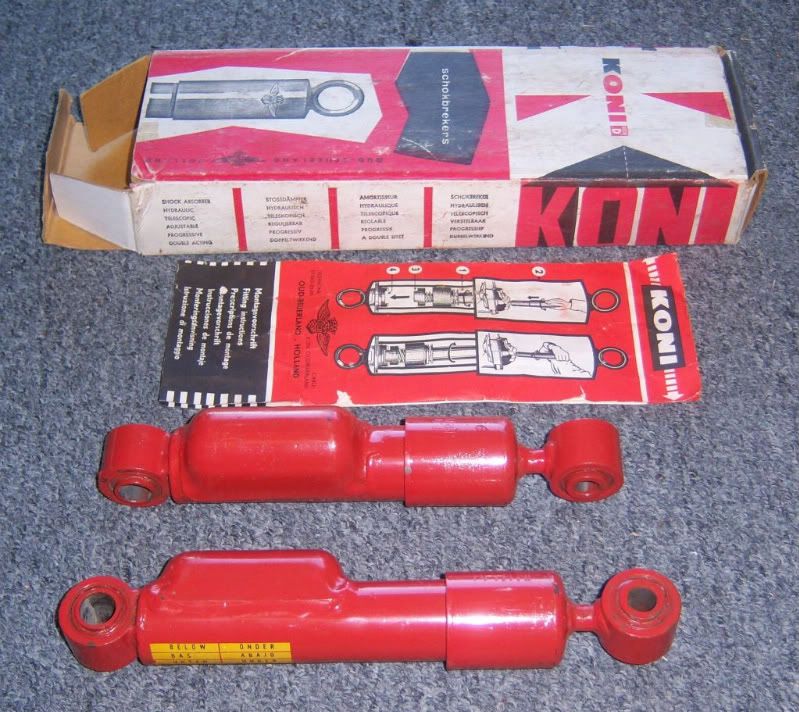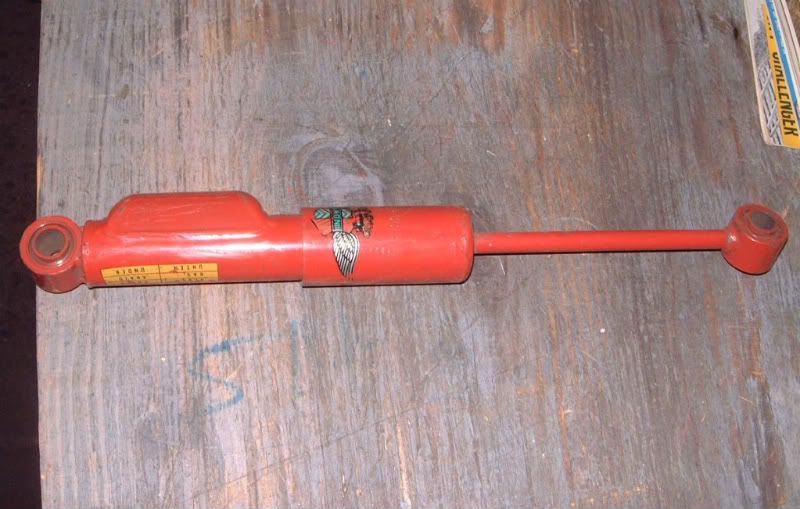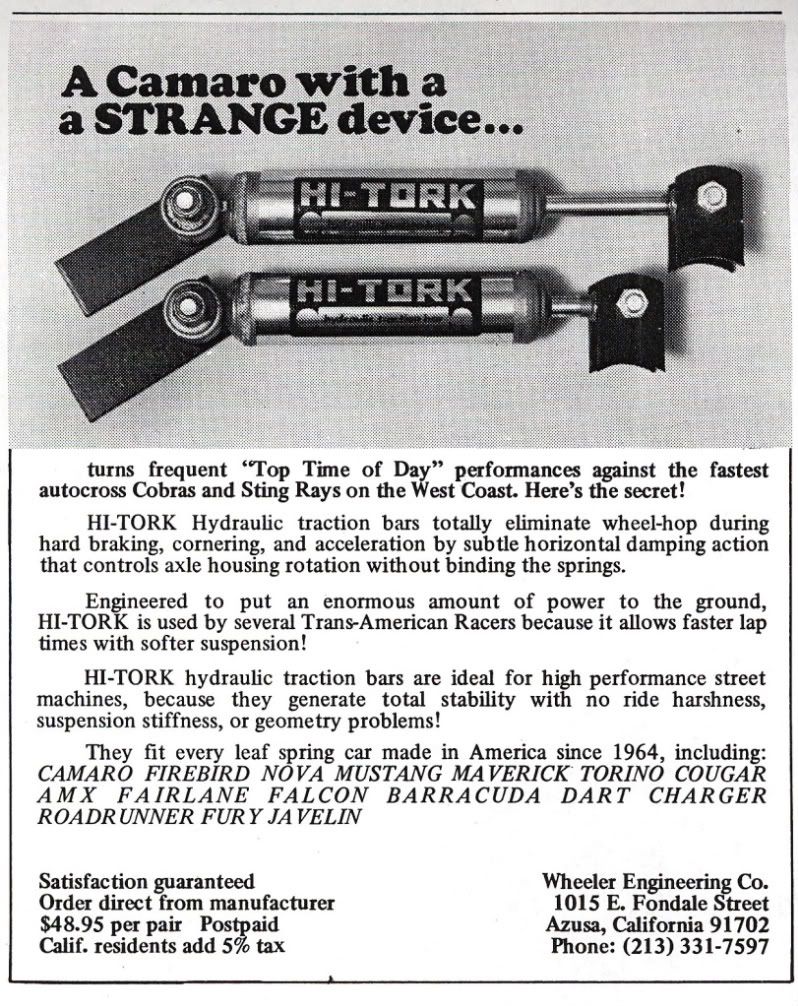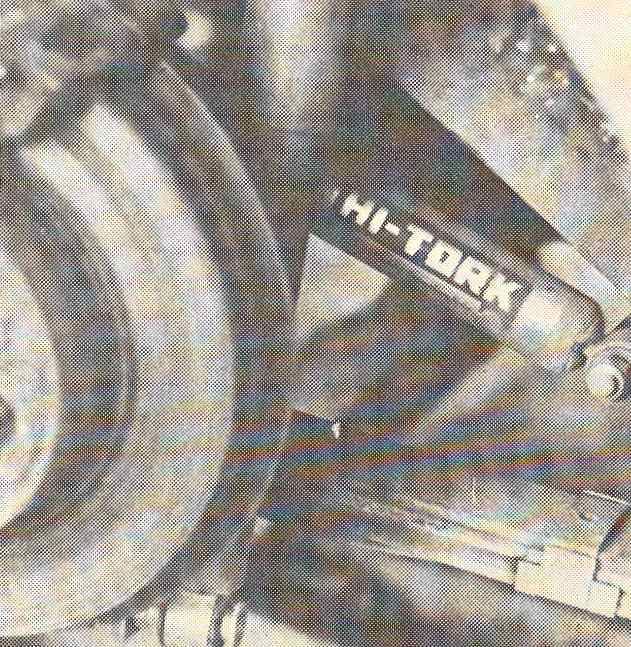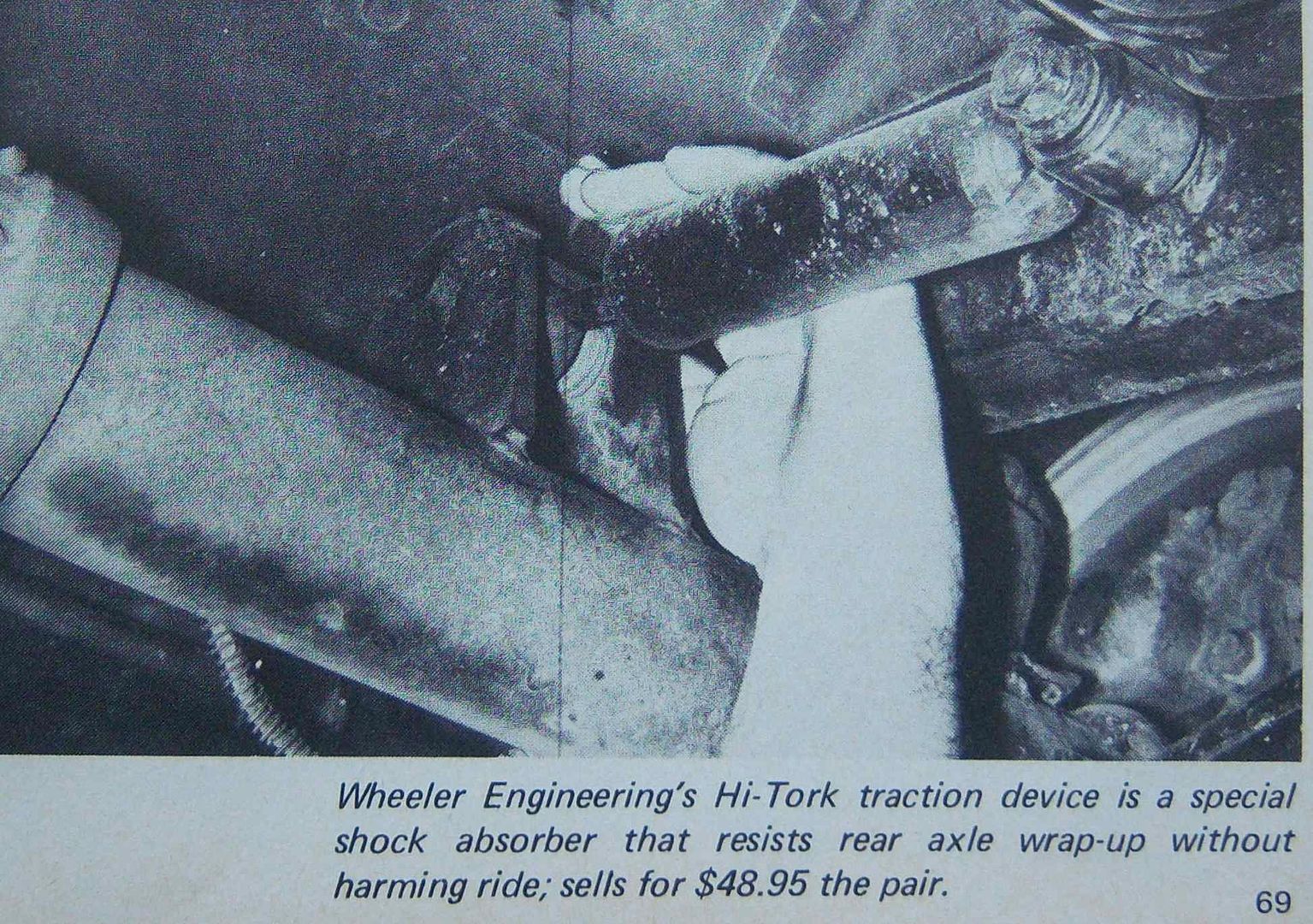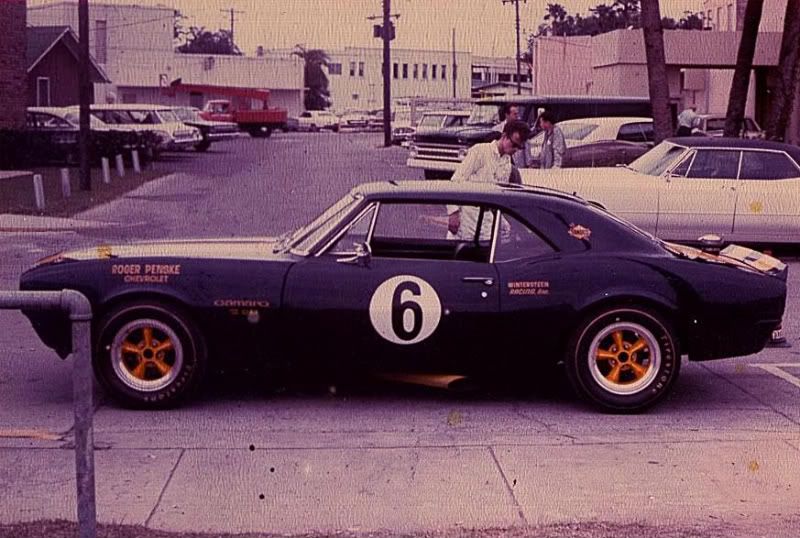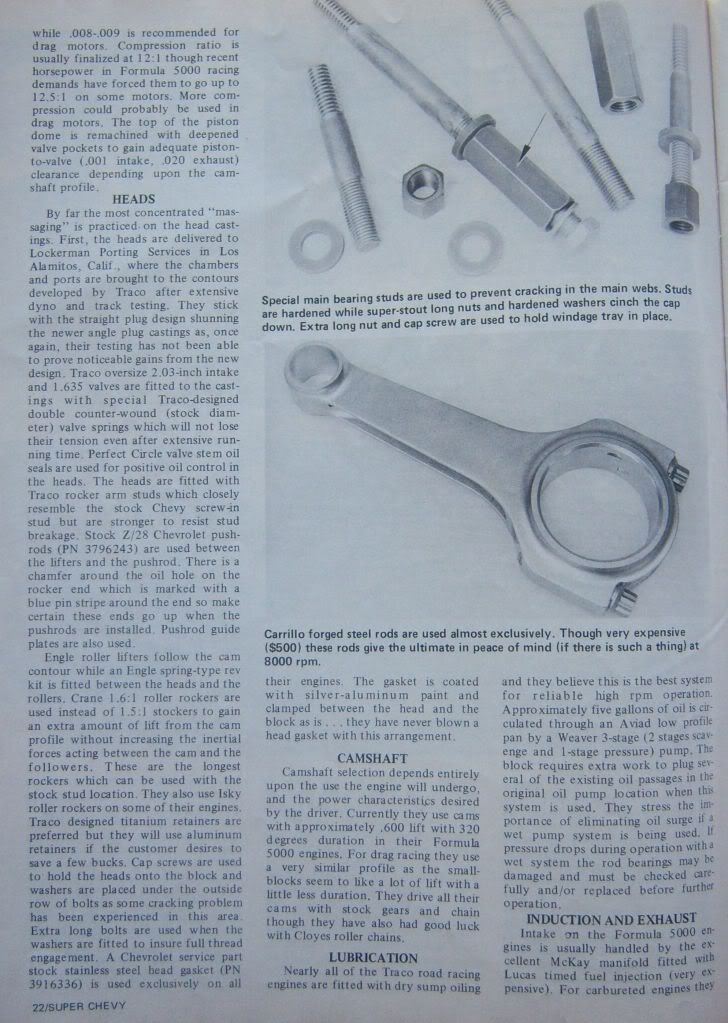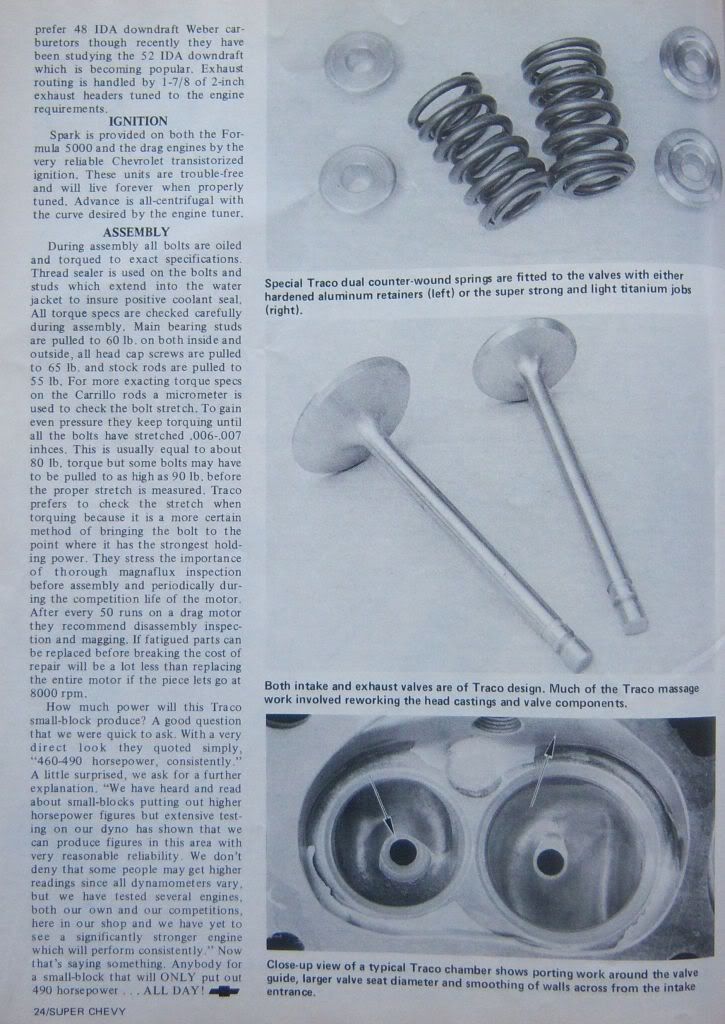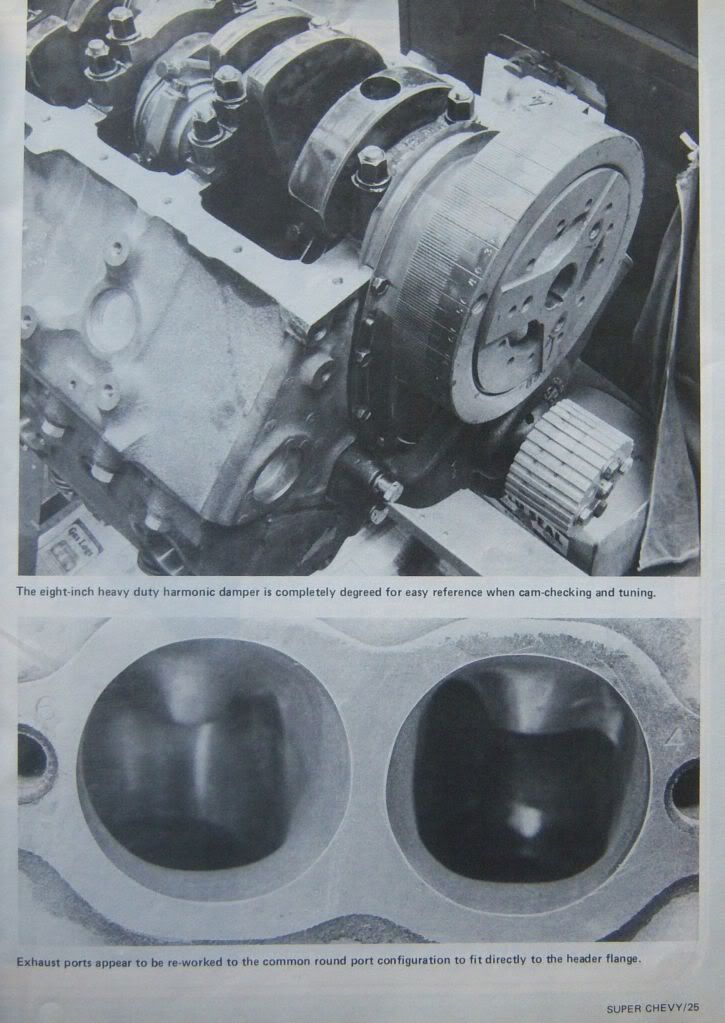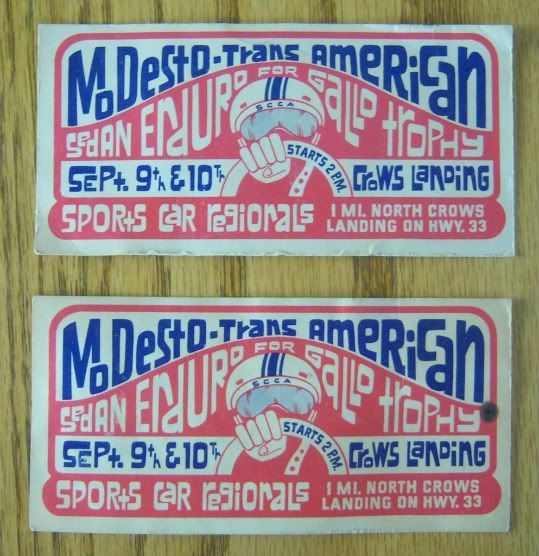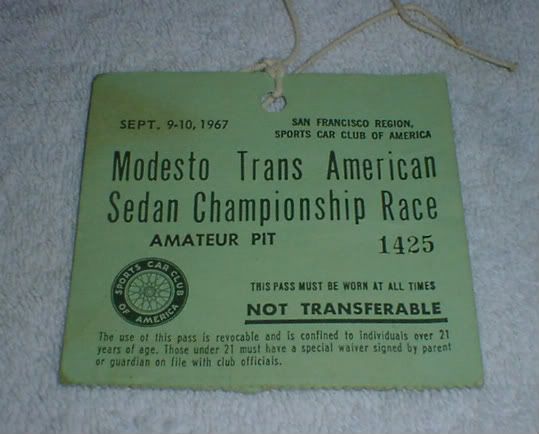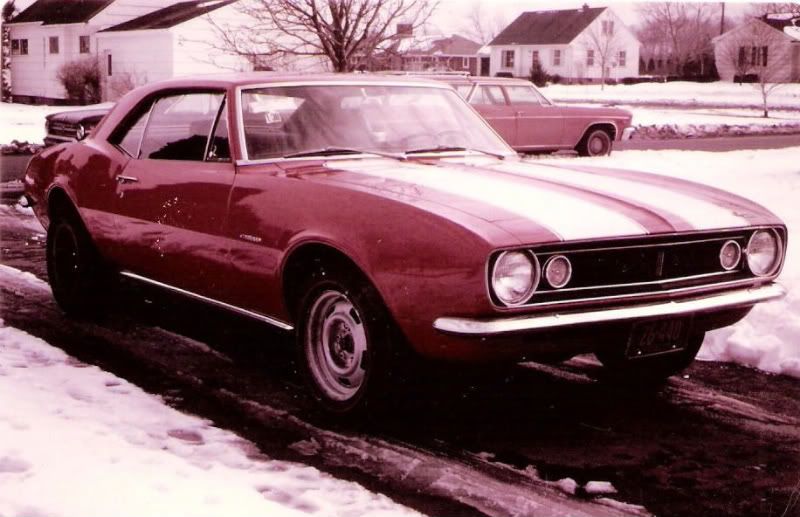Below is an in-depth interview with Dave Horchler (pronounced Hork-ler), former GM Proving Ground engineer and Trans-Am racer. His car was the 16th Z-28 built and was sold through Van Camp Chevrolet in Milford, MI.Trans-Am Racing Recollections
A Conversation with Dave Horchler
By: Jon Mello
One of the very earliest Camaro Z-28s built, car #16 out of the initial batch of 25, was ordered by David D. Horchler, a young engineer at the GM Proving Ground in Milford, Michigan. This Marina Blue Z-28 with RS equipment was purchased with the intent of being a road racer in the SCCA’s fledgling Trans-Am series. It would compete head-to-head against the factory-backed cars, not to mention the numerous privateer efforts that also ran the series. While Dave and his racing partner Dick Hoffman worked for GM, they did not receive money from Chevrolet to campaign their racecar. These were the days when Chevrolet did little to help its racers other than offering technical assistance and making sure to catalog and homologate the necessary parts to field a competitive car. Chevrolet was fairly serious about adhering to the AMA racing ban of 1957 whereas Ford opened the purse strings on its racing budget to almost obscene levels and paid little to no attention to the ban. The following is an interview with Mr. Horchler and focuses on the late ‘60s, which most feel to be the heyday of the Trans-Am series.
(JM) Dave, can you please tell me how you got started in racing and what led you to racing the Camaro in 1967?
(DH) I have always had a strong interest in things automotive. That led me from a degree in electronics at the University of Pittsburgh to my first job as an engineer at the General Motors Proving Ground in Milford, MI. My home was a short drive from a road-racing course that belonged to the Waterford Hills Sportsman Club. I spent many weekends watching Tony DeLorenzo, Bob Clift, Jerry Thompson, Erhard Dahm and many others tear around that challenging 1.5 mile track, As luck would have it, I got infected with the disease. I was working hard, raising a family and teaching electronics at night to pick up some extra money when I went crazy and decided to give racing a try. My first effort was in the Camaro. Dick Hoffman and I both worked at the Proving Ground in Milford and became friends. Dick had done some racing in the Land o' Lakes region since he came from Minnesota. We decided to form a partnership which we called H&H Racing Enterprises. Needless to say, our wives weren't overjoyed. We discussed the Trans-Am series versus the SCCA National and Regional program and from our perspective it appeared that it was just as costly to run a campaign in the Nationals as it was to do the T-A series at that time. We saw a new product announcement of the Z-28 and of course heard about the program from other GM friends that were interested in racing. I ordered a vehicle as soon as the order forms would recognize the option. I believe this was around the middle of December ’66. The car was delivered in mid-to-late January and we proceeded to break in the motor running the back roads behind the Proving Ground until we had about 150 miles on it. Then we started to do the prep work that was allowable in the SCCA rulebook. We did most of the work at Dick's home in Milford and some of it was done at the Proving Ground because in those days employes were permitted to use the garages to work on their personal vehicles. This allowed us access to some machine tools that we didn't own.
(JM) When you chose the Z28 to race, was there a certain element of GM loyalty in your decision or did you firmly believe it was the best choice for Trans-Am and A-Sedan competition?
(DH) GM loyalty was a big factor, plus the fact that we could purchase the vehicle at huge cost savings through employee discounts. Those discounts were available on all of the production parts we could use or wanted to use. The accessibility to the parts was also a factor. Actually, there was never a time when we considered any other vehicle. When we decided to go racing, it seemed that it made no sense to go race for trophies. If there was any possibility of getting some small part of our expenses back, that made it clear that the series to race in at the time was the T-A and being connected to GM made the Camaro the only choice. Another factor in choosing the Trans-Am was the fact that the races allowed co-drivers (in some cases it required them) because both of us wanted the opportunity to drive. The rules at the time made a co-driver mandatory. The sprint races in the current T-A are quite a different situation. We would have needed two cars.
(JM) How long did it take you to get the car prepared?
(DH) The car was prepped in time for me to start driver's school at Waterford Hills in April. From there I went to Grattan for the second school and then started to run regionals to get my National license. I got the National and FIA license in August, in time to run in the endurance race that was held in Marlboro that year. That was in early August of ’67. The following year we ran a number of races, some successfully and some not. We continued to develop the car and incorporate changes throughout the first year. The second year we basically changed only the engine to pull slightly more horsepower and replaced worn parts or those that could be strengthened through heat-treat or shot peening. You didn’t ask, but I believe we had a pretty decent Trans-Am record in the series. In 1967 after a DNS at Lime Rock, we finished 6th in class at Mid-Ohio and then 7th overall at Marlboro. In 1968 we ran Sebring, finishing 28th overall and 10th in class. Following that we ran Mid-Ohio, finishing 7th in class, 10th overall; Meadowdale finishing 6th in class, 9th overall and followed that up with DNF’s at St. Jovite and Watkins Glen. I should also mention that in all of the SCCA regional and national races I ran with the car my finishing position was never lower than 4th and that was in my first national race at Nelson Ledges.
(JM) What was your job at GM back in those days? Did you do any development work on the Camaro in general or the Z-28 in particular?
(DH) I did not have any specific job assignment relating to development of the Z-28. My job was in the Engineering Staff (corporate) during that time. I worked on a lot of programs such as brakes, transmissions, and engine development but generally not for a specific vehicle. Many of my assignments were in the area of developing specialized instrumentation that could be used to collect and analyze vehicle development data.
(JM) What was the first Trans-Am race for the H&H Camaro?
(DH) The 1967 Lime Rock race was the first Trans-Am we attempted. Dick Hoffman and Gib Hufstader were going to drive the car since I was still in the process of getting licensed. Unfortunately too many Porsches showed up for that race and we were not quick enough to qualify. That was the last time that happened! If you look at the results for that race, we were not listed. The first Trans-Am race our car actually ran in was the Mid-Ohio race in June of 1967 where we finished in the top ten. My first Trans-Am race was at the Marlboro, MD track in September of that year. As I mentioned earlier, we finished that race in 7th place.
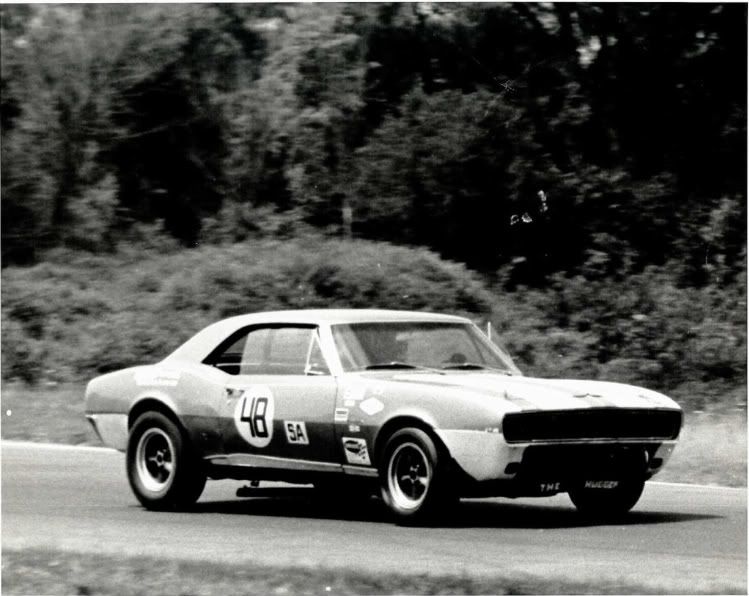 Picture taken at Waterford Hills, 1967. David Horchler collection
Picture taken at Waterford Hills, 1967. David Horchler collection(JM) Is there a particular reason for you choosing the #48 for the car? It appears to have always run using that car number.
(DH) It was simply based on our initials. We chose 48 as our number since “D” is the fourth letter of the alphabet and “H” is the eighth letter. We only changed the number one time that I remember and that was for the ‘68 Sebring race. Our co-driver Joie Chitwood wanted to use 17 on the car.
(JM) In 1967 you had white trim on the lower four corners of the car. Was there a particular reason for that?
(DH) The white trim on the lower sections of the car was white contact paper. Our low-buck way of doing decals at the time. One roll from Kroger or ACE Hardware lasted a long time. It was helpful in making the car easy to spot on the track and also protected the paint. There were lots of rocks and gravel flying on some courses.
(JM) What did you do to your engine to prepare it for racing?
(DH) In 1967, our only engine prep was at the first of the season when we blueprinted the engine. Otherwise it ran untouched through every race we entered that year. We should have stuck with it because we blew two engines in 1968 while running in 5-6th places in races at St. Jovite and Watkins Glen. The engines in 1968 were tweaked slightly for more power, but we wanted to endure the races as opposed to trying to beat the six-eight factory cars from GM, Ford, and AMC. Our objective was to be the best finishing private entry in the over 2-liter class.
(JM) I believe there was a problem with defective axles that first season. Do you recall anything about that?
(DH) GM had determined that a group of axles had received a bad heat treat at a critical area near the hub. The week of the Marlboro race (August ’67), they loaded up a station wagon and sent two guys off to the track to replace as many axles as they could. Our axles were original and we were not concerned, however we did change them out. I know that not all of the Chevy guys were recipients of the "good" parts. I suspect that the #4 Johnny Moore car did not receive the new parts as he broke an axle midway through the race. The two guys that came to the track were Paul Pryor and Bill Howell. Bill Howell was the engine guy who worked a lot on the dual quad set-up in 1968. Paul was more of a chassis guy. They worked for Vince Piggins who ran the Chevy race activity at the time.
(JM) I know you ran the Sebring 12-hour race in 1968. Why didn’t you try your hand at the Daytona 24-hour?
(DH) In a word, money. We were short for the season and without any sponsorship to speak of. We did not do a good job of looking for sponsors or selling a ride for the race. We decided to conserve our funds for the races that were close to our home base. Chitwood came along and rented a ride, which helped us go to Sebring. In spite of our penny-pinching, we were essentially out of funds by the time we got through with the Watkins Glen race that year. We missed most of the races after that.
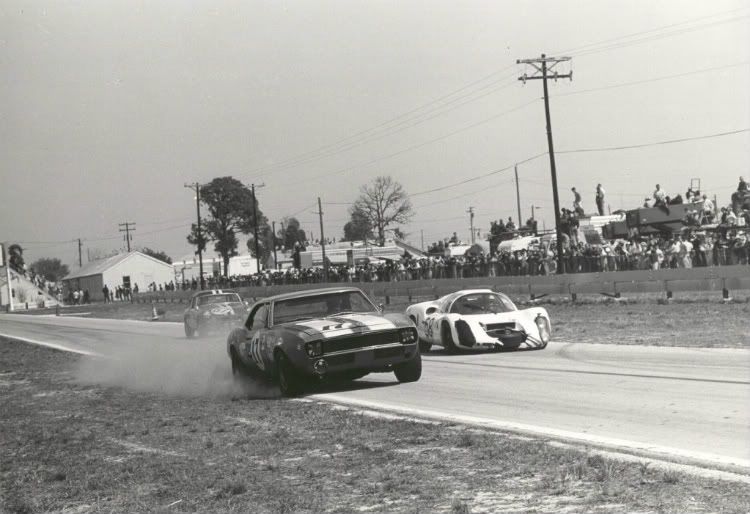 Sebring 12-Hour race, March 1968 photo by Bernard Cahier
Sebring 12-Hour race, March 1968 photo by Bernard Cahier(JM) I thought it was interesting that Joie Chitwood drove with you and Dick at Sebring. Can you tell me more about how that came about?
(DH) We were looking for sponsorship for the race and his name came up via Vince Piggins. A few phone calls were exchanged and we subsequently agreed to the ride with him, essentially renting a seat. We had the car pretty well prepared for the race except for the late addition of the dual carburetor setup that was homologated in late 1967 for the car. Bill Howell, a GM engineer, came down to the race and assisted with the setup. He tried different jetting and modified the accelerator pumps to get the system balanced to get it to deliver the power seen in dyno testing at the lab in Michigan. We started the race pretty well with Joie driving and dicing with the big guys in our class. He was complaining about the performance of the engine system --- in essence, the carburetion. At driver change I began driving and had a flat tire at the hairpin after locking up the brakes there. Very embarrassing. Dick Hoffman carried a tire and wheel out and we changed it on the course and got back in. The car continued to suffer from the carburetion malady and finally Bill Howell asked us to come in for a round of adjustment and re-jetting. This took about an hour and a half. Chitwood became disenchanted and didn't hang around too long during this time. We finally got back in and finished the race with Hoffman and I doing most of the driving. Chitwood drove for a short time. We finished 28th or so overall and 10th or 11th in class. I have the official results somewhere in the archives. I guess that it was not a special time for Joie and we had no further activity with him throughout the year. I guess he expected much more than he received. In 20-20 hindsight we should have stayed with the single four-barrel Holley that served us well throughout the previous year. Lesson: never go racing with untried parts or technology, unless you are Jack Roush, Penske or the like, with resources to run two or more cars.
 Sebring 12-Hour race, March 1968 photo by Pete Biro
Sebring 12-Hour race, March 1968 photo by Pete Biro(JM) Was there anybody else who co-drove with you two at another Trans-Am race?
(DH) Gib Hufstader was the only other person. As I mentioned previously, he and Dick tried to qualify the car for the ’67 Lime Rock Trans-Am (which didn’t pan out) and then he co-drove again at Marlboro with Dick and I. Gib has a long history as a Chevrolet engineer with the Corvette group. He could really give you a history lesson. He was a steady driver who saved the car while going fast as well. He and I remain friends today.
(JM) I saw that you ran at Meadowdale in ’68. That track has always intrigued me as my family moved nearby just a few months after the one and only Trans-Am race which was run there. What do you recall about that particular track?
(DH) That course was scary. It had no run-off areas and was narrow. As you came to the start-finish line in an uphill turn, the camber change at the top of the hill had cars jumping sideways and there were some collisions at the top of the hill. After the start/ finish line the track went downhill into a banked carousel turn, as I remember. This led to a long straight in a valley of sorts that was tree-lined and sort of like running into a tunnel of trees. Then there was a real tunnel under the entrance road, as I remember it. I have the program from that race and I think it has an outline of the course. Dick Hoffman drove the entire race that day. I had the flu and was woozy all weekend so Dick did the whole thing. I think he finished sixth or something like that. I think that was a Donohue, Titus, Follmer battle for the win, but will have to check the results sheet to be sure what happened.
